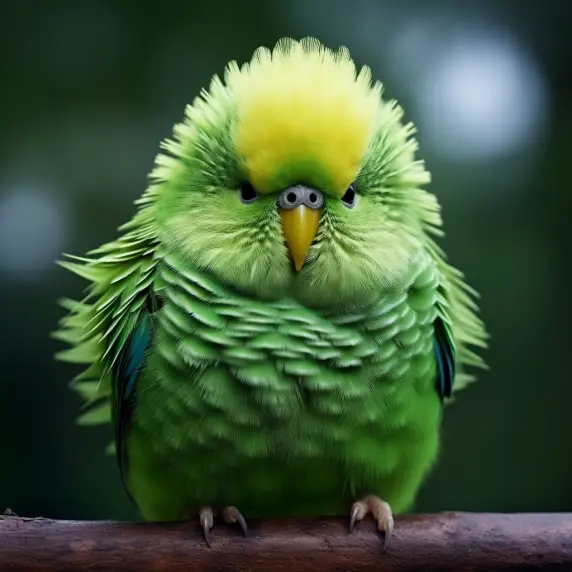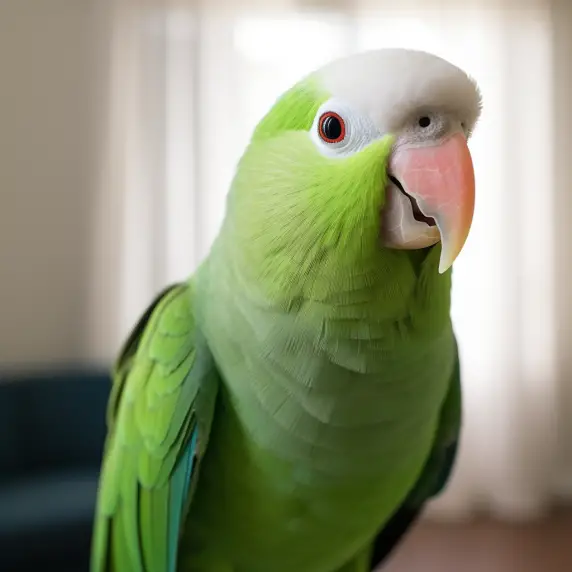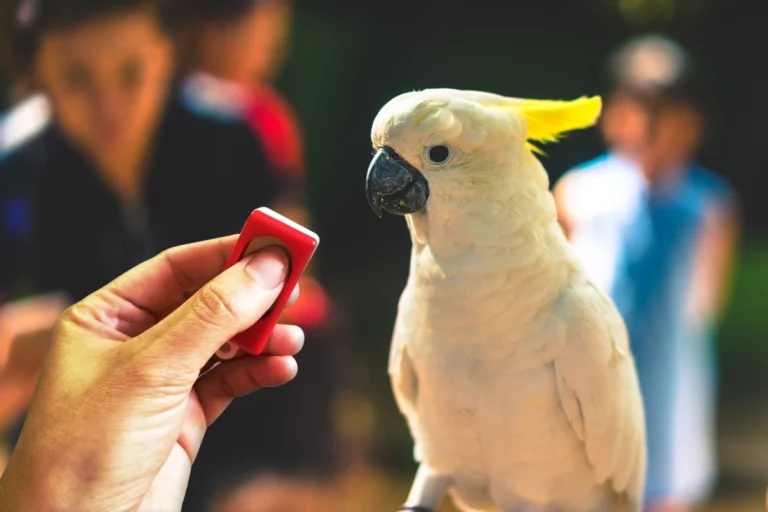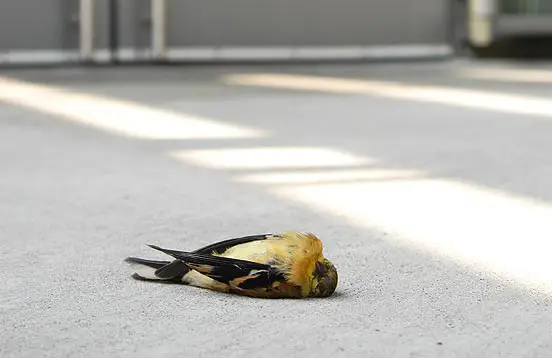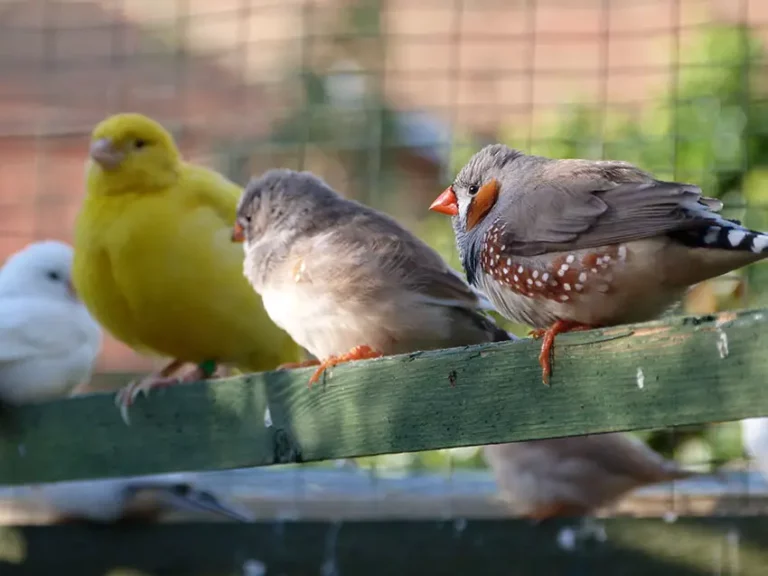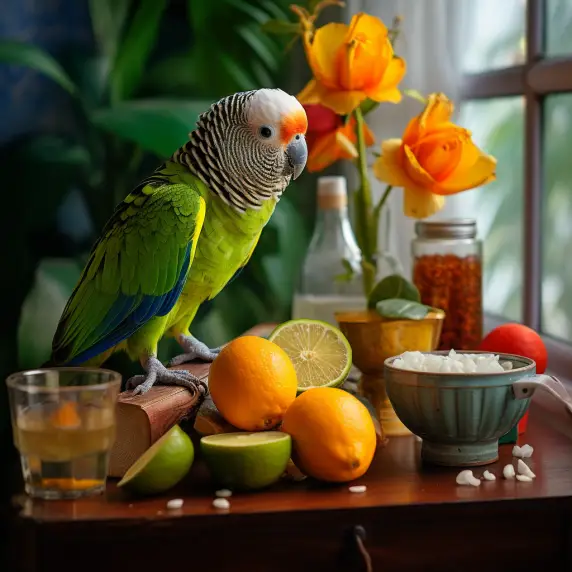Why Do Parakeets Kiss Each Other? 8 Reasons
Budgies and parakeets, adored for their vibrant colors and playful nature, often exhibit behavior that looks just like human kisses. Many bird owners find themselves asking, why do parakeets kiss each other?
It’s a fascinating display of their complex social structure and communication techniques. In this blog post, we’ll delve into this intriguing behavior to uncover its various meanings and implications.
We’ll cover 8 reasons why Parakeets kiss each other briefly, then we’ll delve into some of the reasons in more detail.
By understanding why your feathered friends engage in this act, you’ll gain deeper insights into their health, happiness, and relationship dynamics.
Let’s begin!
8 Reasons Why Parakeets Kiss Each Other: Overview
Parakeets display a range of behaviors that can be quite fascinating to understand. One such behavior is ‘kissing’ each other. Below, we delve into the eight primary reasons why parakeets engage in this intimate act.
1) Bonding
Parakeets are highly social birds that thrive on companionship. ‘Kissing’ is one way they reinforce their bond with each other, demonstrating a deep connection.
2) Affection
‘Kissing’ is a direct expression of affection between two birds. Much like humans, parakeets use this action to show love and trust in their relationship.
3) Preening
Parakeets often follow up ‘kissing’ with preening, which is the act of cleaning each other’s feathers. This activity helps them bond and shows mutual care.
4) Feeding
You might see one parakeet regurgitating food into the other’s mouth, a behavior that looks like kissing. This act is common among mated pairs and is a sign of deep affection and trust.
5) Communication
‘Kissing’ can also serve as a means of communication. Parakeets might ‘kiss’ to greet each other or convey other messages.
6) Courtship
In the context of a male and female pair, ‘kissing’ can be a part of courtship behavior, signaling a desire to mate.
7) Play
Parakeets are playful birds, and ‘kissing’ can be a part of their play behavior, indicating a healthy and positive interaction.
8) Dominance
Sometimes, what seems like ‘kissing’ could be an assertion of dominance. One bird might be attempting to establish its territory or hierarchy within their shared space.
Recognizing the context and accompanying behaviors can help us understand whether the ‘kissing’ is a positive interaction or if there is a cause for concern. If the interaction is followed by aggressive behavior, it’s important to monitor closely and intervene if necessary to ensure the well-being of both birds.
Decoding Parakeets’ Kissing Behaviour Further
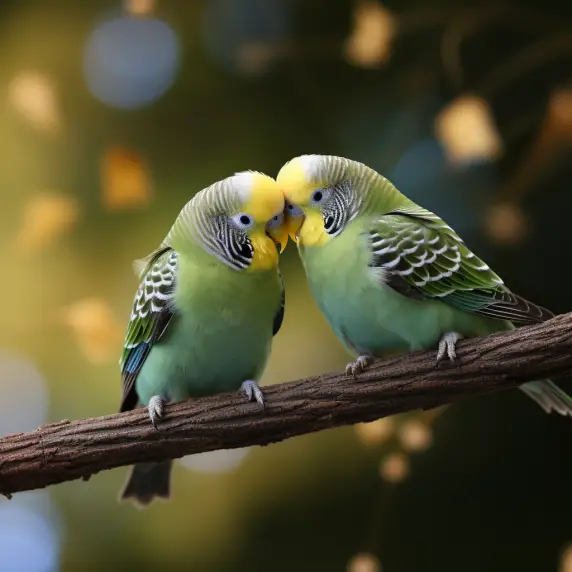
Primarily, parakeets kiss each other as a sign of social bonding and affection. These birds are highly social creatures that form strong bonds with their flock members, which includes their human caregivers too.
So, when your parakeets touch beaks and appear to be “kissing,” they’re essentially reinforcing their social bonds.
Another reason for this behavior is food exchange, a common practice especially during the breeding season. One bird regurgitates food into another bird’s mouth, which might appear as a kiss to the untrained eye. This act is a vital part of courtship rituals and parental care.
Parakeets also “kiss” to explore their surroundings. Their beaks serve as an important sensory tool, just like our hands. So when they touch or “kiss” objects or other birds, they’re essentially investigating their environment.
Lastly, it’s a form of playful interaction. Budgies are playful birds and enjoy engaging in various playful activities with their fellow companions. “Kissing” can be part of these playful interactions, adding variety to their playful behavior repertoire.
However, while this behavior is generally associated with positive meanings, it’s important to distinguish it from signs of aggression or dominance. If the “kissing” is accompanied by aggressive body language or vocalizations, it could indicate a conflict between your birds.
Observing their behavior closely will help you identify any potential issues and ensure your parakeets are indeed sharing a moment of affection and not engaging in a territorial dispute.
The Language of Love: Bonding and Affection
Parakeets, like many other social birds, express their love and affection in unique ways, and ‘kissing’ is one such gesture that signifies a strong bond between birds. When you see your parakeets locking their beaks and appearing to ‘kiss’, they’re likely expressing their affection and reinforcing their bond.
This ‘kissing’ behavior is typically followed by mutual grooming, also known as preening, where birds clean each other’s feathers. Preening is a significant social activity for parakeets and a clear sign of trust and affection.
So, if your parakeets ‘kiss’ and then preen each other, they’re engaging in a bonding ritual that strengthens their relationship.
However, it’s important to understand that not all beak-to-beak contact is a sign of affection. Sometimes, what may appear to us as a ‘kiss’ could be an act of dominance or a territorial dispute. Understanding the body language that accompanies the ‘kissing’ can help us accurately interpret their behavior.
For instance, if your parakeets are relaxed, fluffed up, and gently chattering during the ‘kissing’, it’s likely a loving interaction. On the other hand, if they are rigid, displaying flattened feathers, and making sharp, loud noises, it might indicate a conflict.
Understanding these nuances will help you ensure your birds are in a healthy and harmonious relationship and not in distress. After all, our feathery friends rely on us to understand their language and provide them with a safe and happy environment.
Signs of Mating: Understanding Courtship among Parakeets
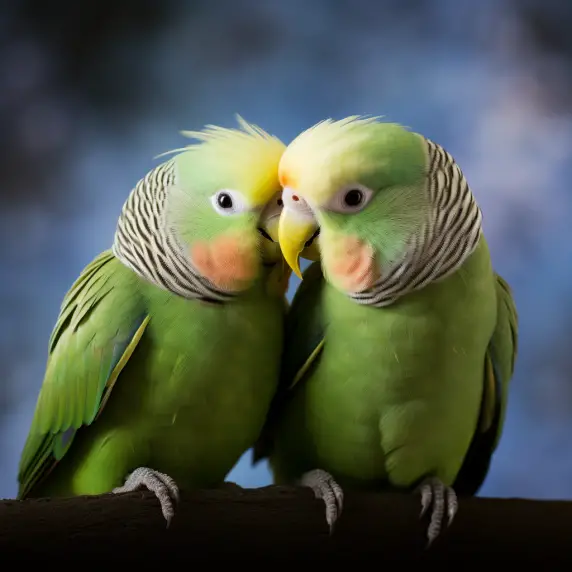
Understanding the mating behaviors of parakeets can be an essential aspect of responsible bird ownership. The courtship ritual of parakeets is particularly unique, and ‘kissing’ can be a significant part of it. Here are some signs to look for to determine if your parakeets are courting:
Beak Tapping: This action can be likened to a soft ‘kissing’ gesture where parakeets tap their beaks together. This is a common courtship behavior, indicating they are comfortable with each other and potentially ready to mate.
Mutual Preening: This involves one bird gently grooming the other, cleaning and smoothing their feathers. This not only shows affection but also signifies the willingness to take care of each other – a necessary aspect for successful mating and nesting.
Feeding: Male parakeets often regurgitate food to the female as a part of their courtship ritual. If you notice one bird feeding another, it could be a sign of a budding romantic relationship.
Body Language: Look out for fluffed-up feathers, extended wings, and wagging tails. These behaviors, coupled with ‘kissing,’ can signify courtship.
Vocalizations: Male parakeets typically serenade the females with songs during courtship. If your parakeets are vocalizing more than usual while displaying affectionate behaviors, they might be preparing to mate.
Nesting: If your parakeets begin to gather materials or show interest in a nesting box, it’s a strong sign they might be getting ready for breeding.
These signs together can provide a clear indication of courtship and mating behaviors. Always ensure that the environment is safe and supportive for your birds during this crucial time. Remember, courtship behaviors should not be mistaken for signs of aggression. If you’re unsure, consult with a bird behavior expert or a vet.
Communication: More than Just Noise
Parakeets are incredibly social creatures and, like us humans, they have complex communication methods. The infamous ‘kissing’ or beak-locking we often see is part of this vast repertoire of signals.
It serves multiple purposes in the interaction and communication among these feathery friends. Here are some ways ‘kissing’ fits into parakeet communication:
Sharing Information: Parakeets can pass on useful information to each other through ‘kissing’. This could be about the availability of food, water, or potential dangers lurking around. Sharing such data can help strengthen their bond and ensure the flock’s survival.
Establishing and Maintaining Bonds: ‘Kissing’ helps parakeets establish and maintain bonds with each other. It’s an integral part of their social structure. Birds who frequently engage in this behavior often share a strong connection, indicative of a harmonious relationship.
Learning: Young parakeets learn many things from their elders, and ‘kissing’ is one way of facilitating this learning. Whether it’s about discovering food types or understanding social norms, this activity allows younger birds to pick up critical skills from experienced ones.
Settling Disputes: Sometimes, ‘kissing’ can help settle minor disputes among parakeets. They could use it as a peaceful way to determine who’s in charge, especially when a new bird is introduced into the environment.
Expressing Comfort and Trust: ‘Kissing’ also indicates that parakeets feel safe and comfortable with each other. It’s an expression of trust, showcasing that they feel secure enough to allow another bird into their personal space.
Understanding these communication nuances can help you better relate to your parakeets and ensure they are comfortable and happy in their environment. It’s essential to observe their behavior continually and make necessary adjustments in their surroundings as needed.
Kissing or Fighting: How to Distinguish
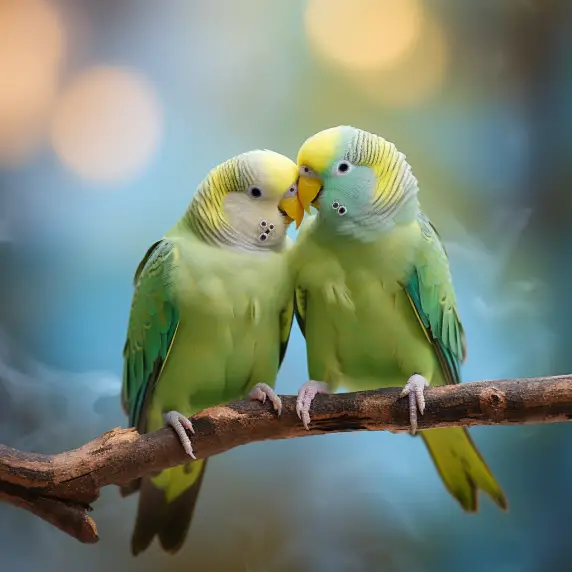
Deciphering whether your parakeets are kissing or fighting can sometimes be a tricky task, especially if you’re new to bird-keeping. Here are some pointers that might help you distinguish between the two behaviors:
Body Language: A crucial difference lies in their body language. When parakeets are kissing, their body posture is relaxed, and they appear comfortable in each other’s space. On the other hand, during a fight, they might puff up their feathers, lower their heads, and open their wings, showing signs of aggression.
Eye Pinning: Eye pinning is another signal to watch out for. When parakeets are excited or aggressive, they tend to rapidly contract and dilate their pupils. If you notice this along with what seems to be a ‘kissing’ behavior, it might be a sign of a skirmish.
Sound: Parakeets typically chirp or squawk while ‘kissing’, and the sounds are usually relaxed and melodious. If you hear sharp, loud squawking, it could mean they are fighting.
Biting: ‘Kissing’ in parakeets generally involves the locking of beaks and feeding each other. If you observe actual biting and one bird seems to be in distress, it’s likely a fight.
Behavior After the Interaction: Post-interaction behavior can also give you clues. If the birds continue their regular activities or remain close to each other after their beaks part, it was probably a kiss. If one or both birds seem upset or agitated, a fight may have taken place.
Remember, observing your birds’ behavior over time can help you better understand their actions and relationships. If you are ever in doubt or notice continual aggression, it might be best to consult with a vet or a bird behaviorist.
Do Male Parakeets Kiss Each Other?
Yes, male parakeets do kiss each other. This might come as a surprise to some bird owners, but it’s not unusual behavior. Male parakeets, like their female counterparts, engage in this activity to display friendship, establish bonds, and communicate with one another.
Here are some reasons why male parakeets might “kiss” each other:
- Bonding: Parakeets, irrespective of their gender, create strong bonds with each other. These bonds are essential for their social structure. ‘Kissing’ or beak touching is one way to affirm and strengthen these bonds.
- Communication: Parakeets ‘kiss’ to communicate various feelings or intentions. They might do this to express comfort, happiness, or even dominance.
- Mirroring Behavior: Sometimes, male parakeets might mirror the behavior they see. If they’ve been around other pairs that ‘kiss’, they could mimic this behavior.
- Absence of a Female: In cases where there are no females, male parakeets might engage in ‘kissing’ behavior with each other. It’s their way to exhibit social bonding and interaction.
Keep in mind that while this behavior is normal, extreme aggression or constant ‘kissing’ can indicate an underlying issue. If you notice anything concerning, it would be best to consult a bird expert or a vet.
Kissing Across Species: Birds and Humans
“Kissing” isn’t a behavior exclusive to parakeets or even to birds. As human companions to these lovely creatures, we might be surprised to find that our pet birds sometimes try to “kiss” us too. Let’s explore what these interactions mean and how we should respond.
Birds Kissing Humans
Birds might show affection or bond with their human caregivers by attempting to “kiss” them. They can do this by gently pecking at their human’s mouth or cheeks or nuzzling against their face. These behaviors can signify trust, comfort, and attachment. However, remember that our understanding of bird behavior is continuously evolving, and these interactions should always be interpreted with respect for the bird’s comfort and safety.
Budgies Kissing Humans
Budgies are known for being particularly sociable and affectionate. If a budgie tries to “kiss” its human caregiver, it can be a sign of a strong bond. The bird sees you as part of its flock and feels safe and comfortable around you.
Remember to always approach these interactions with care. Birds have much smaller and more delicate bodies than we do. It’s important to never force these interactions and always respect the bird’s comfort and personal space.
Responding to Bird Kissing
If your bird tries to “kiss” you, it’s generally okay to reciprocate lightly (by mimicking a gentle beak tap or nuzzle), as long as it doesn’t stress the bird. Avoid using your mouth in these interactions for hygiene reasons, as our saliva can potentially harbor bacteria harmful to birds.
The Art of Sharing: Food Exchange
When it comes to parakeet kissing, it’s crucial to recognize the role that food exchange plays in this behavior. In the wild, birds often share food as a way to reinforce social bonds, signal trust, and even as part of their mating ritual.
Understanding Regurgitation in Birds
What may seem like a simple kiss could actually be a parakeet performing a regurgitation act. Parakeets may regurgitate food to share with another bird as a sign of affection or bonding. This act is generally seen between mated pairs or between a parent and its offspring.
Is Regurgitation a Concern?
It’s important to distinguish between normal regurgitation and potential signs of illness. Healthy regurgitation is typically deliberate, controlled, and directed towards another bird or their favorite toys.
On the other hand, if your parakeet is regurgitating frequently, seems lethargic, or has changes in its droppings, these might be signs of illness, and a vet check-up is recommended.
Responding to Regurgitation
If your parakeet attempts to regurgitate and share food with you, it’s a clear sign of their trust and affection. However, while it’s okay to let them perform the action, avoid ingesting any of the regurgitated food for hygiene reasons. As mentioned previously, our saliva can contain bacteria harmful to birds.
Understanding the intricacies of parakeet behavior, like “kissing” or food exchange, can deepen our connection with these fascinating creatures, fostering a more enriching and satisfying companionship.
Asserting Dominance: Power Dynamics in Action
In the social dynamics of parakeets, kissing can be more than a show of affection. It can also be a tool for asserting dominance and establishing a pecking order within their group. Understanding this helps us interpret their behaviors better, promoting harmonious bird-human interactions.
Dominance and Parakeet Kissing
While parakeet kissing often stems from affection or bonding, it can also be an indicator of dominance. The dominant bird in a pair or group may use the act of ‘kissing’ to assert its status over the others. The ‘kiss’ in this context can look more like a gentle peck or nibble on the beak, head, or neck of the other bird.
Reading the Signs
Identifying dominance displays isn’t always straightforward. Context matters a lot. For instance, if the ‘kissing’ action is paired with aggressive body language, such as puffing up feathers, sharp movements, or loud squawks, it’s likely a show of dominance rather than affection.
Maintaining a Balanced Environment
Understanding power dynamics among your parakeets can help maintain a balanced and stress-free environment. If a dominant bird is consistently aggressive towards a more submissive one, consider interventions such as separate feeding stations or even separate cages if the aggression continues.
In conclusion, parakeets’ actions are not always what they seem at first glance. Learning to decode the signs of dominance can lead to a more harmonious and comfortable environment for your feathered friends.
Playtime: ‘Kissing’ as Fun and Entertainment
Among the many reasons why parakeets kiss each other, one that might come as a surprise is simple fun and entertainment. Like many animals, parakeets are playful creatures who engage in various activities to amuse themselves and others in their flock. ‘Kissing’ can be one of these playful behaviors that are enjoyable and stimulating for them.
The Playful Nature of Parakeets
Parakeets are known for their vibrant, playful, and social nature. They enjoy interactive activities, including games that involve their beaks. ‘Kissing’ is one such activity that can turn into a game for these birds, involving touch, mutual interaction, and even imitation.
Parakeets and Imitation
Parakeets, especially budgies, are known for their impressive mimicry skills. When they see their human caretakers mimicking kissing actions, they might imitate these actions with their companions, turning it into a fun and engaging activity.
Promoting Healthy Play
As bird owners, it’s crucial to provide your parakeets with plenty of opportunities for play and stimulation. Toys, mirrors, swings, and perches can all contribute to an environment that encourages healthy play, which can reduce stress and enhance your birds’ overall well-being.
Remember, a happy parakeet is a healthy parakeet. Understanding their behavior, such as ‘kissing’, not only helps us interpret their actions better but also aids in providing a fun, enriching environment that caters to their social nature.
Comforting Each Other: A Sign of Empathy
The behavior of ‘kissing’ in parakeets often extends beyond playfulness and dominance. One of the key reasons why parakeets kiss each other is as a comforting mechanism, a sign of their deep sense of empathy towards their companions.
Parakeets and Empathy
Parakeets are known for their social nature, forming strong bonds with their flock members. They often respond to the emotional state of their companions. For instance, if a bird is upset or agitated, their companion may attempt to comfort them by engaging in ‘kissing’ behavior, essentially, a gentle nibble or beak touch.
The Comforting Kiss
In the wild, birds often preen each other as a way of bonding and comforting each other. While ‘kissing’ is not precisely the same as preening, the sentiment behind the action can be similar. A gentle beak touch can be a parakeet’s way of saying, “I’m here for you.”
Understanding Emotional Health in Parakeets
Recognizing the emotional health of your parakeets is as important as monitoring their physical health. Birds can experience stress, anxiety, and even depression. Providing a safe, comfortable environment and regular social interaction can contribute to their overall emotional well-being.
Understanding the empathetic nature of parakeets can significantly enhance our care for these creatures. Recognizing that their ‘kissing’ behavior may be a comforting gesture allows us to better understand their emotional needs and ensure their well-being.
The Curious Case of Mimicry
As curious, intelligent creatures, parakeets engage in mimicry for various reasons. The act of ‘kissing’ isn’t always a standalone behavior but could be a learned response as parakeets are known to imitate actions they observe.
Parakeets and Imitation
Parakeets, particularly budgerigars, have been observed to mimic the sounds and actions of their flockmates or even their human companions. This mimicry isn’t restricted to vocalizations alone. If a parakeet sees a fellow bird or a human exhibiting a particular behavior, such as ‘kissing,’ they may attempt to recreate it.
Mimicry as a Learning Tool
In the wild, young parakeets learn various essential skills through imitation, from finding food to avoiding predators. In a domestic setting, this instinct to mimic can manifest in a range of behaviors, including ‘kissing.’
As social creatures, they seek interaction and communication, and mimicry serves as an effective tool for such social bonding.
A Sign of a Positive Environment
Mimicry often indicates that your parakeet is comfortable in its surroundings and is actively engaging with its environment. It’s important to provide mental stimulation to these intelligent birds, with toys, puzzles, and social interaction, to keep them active and healthy.
Recognizing that ‘kissing’ behavior in parakeets can also stem from their instinct to mimic provides a more comprehensive understanding of these fascinating birds. It underscores their intelligence and adaptability, further enriching our bond with these feathered companions.
Observing and Responding: What Should You Do
It’s captivating to watch parakeets ‘kiss’ each other, but as an owner, understanding their behavior is crucial. If you notice your parakeets are kissing frequently, here’s what you should do:
1. Monitor Their Behavior
The first step is to closely monitor your parakeets. If the ‘kissing’ is accompanied by other signs of affection such as preening or cuddling, it’s likely a form of bonding. But if you observe aggressive behavior like biting or fighting afterward, it might be a sign of conflict.
2. Check for Signs of Illness
‘Kissing’ is a common way for parakeets to share food, but if one bird is consistently feeding the other outside of the breeding season, it might be because the recipient is ill and unable to eat independently. Keep an eye out for other signs of sickness, such as loss of appetite, lethargy, or changes in droppings.
3. Consult with a Vet
If you’re unsure about your parakeets’ behavior or suspect that they’re unwell, consult with a professional. An avian vet will be able to identify any health issues that may be causing unusual ‘kissing’ behavior.
4. Provide a Comfortable Environment
Ensure that your parakeets have a comfortable and stimulating environment. This includes a spacious cage, plenty of toys, a healthy diet, and regular opportunities for social interaction and exercise.
Understanding why your parakeets ‘kiss’ each other and how to respond appropriately will not only ensure the birds’ well-being but also help to strengthen the bond between you and your feathered companions. Always remember that each bird is unique, and behaviors can vary widely, so patience and attentive care are key.
Frequently Asked Questions
In this section, we will address some of the most common questions people have about parakeets and their ‘kissing’ behavior. Each of these questions has been answered with the latest avian research and expert opinions to provide the most accurate information possible.
Why do my birds ‘kiss’ each other?
Birds ‘kiss’ each other as a form of social bonding, to share food, or during courtship. However, it’s important to differentiate between affectionate ‘kissing’ and potentially aggressive behaviors, which might appear similar.
How do parakeets show affection to each other?
Parakeets show affection through a variety of behaviors such as preening each other, cuddling, sharing food, and yes, ‘kissing.’ This helps to strengthen their bond and establish trust.
Why do parakeets peck at each other?
Pecking can have different meanings. It can be a sign of dominance, a way to establish a pecking order, or a part of their grooming routine. However, repeated or aggressive pecking could indicate a problem that needs to be addressed.
What does it mean when budgies ‘kiss’?
When budgies ‘kiss’, it’s often a sign of affection and bonding. They may also be sharing food or engaging in courtship behavior. However, aggressive ‘kissing’ or pecking could indicate a dominance struggle or conflict.
Are my parakeets ‘kissing’ or fighting?
To distinguish between ‘kissing’ and fighting, observe their body language. If it’s followed by preening or cuddling, it’s likely ‘kissing.’ But if it’s accompanied by aggressive behaviors such as biting, raised feathers, or territorial displays, it may be a sign of conflict.
Remember, each parakeet is unique, and understanding their individual behaviors is key to providing a nurturing environment for them. When in doubt, always consult with an avian vet or an expert in bird behavior.
Final Thoughts
Parakeets are fascinating creatures with their colorful plumage and complex social behaviors. Their ‘kissing’ is not just a simple action, but a communication tool serving various functions like bonding, food sharing, courtship, or even dominance assertion.
The multifaceted nature of this behavior underlines the complexity of these birds and the importance of providing them with an enriching environment. As pet owners, it’s our responsibility to understand their needs, behaviors, and signals to ensure their well-being.
Remember, if you notice any drastic changes in your parakeet’s behavior or if you are unsure about any aspect of their care, it’s always best to consult a professional or a vet. These experts can provide more in-depth knowledge and advice tailored specifically to your bird’s needs.
The world of parakeets is full of surprises, and ‘kissing’ is just one of the many behaviors that make them such captivating companions. So, next time you observe your parakeet in the middle of a ‘kiss,’ you’ll know there’s much more going on beneath those fluttering feathers!
References
- Why Do Parakeets Kiss Each Other?
- Parakeet Kissing Meaning
- Understanding Parakeet Behaviour
- Why Do Budgies Kiss Each Other?
The information shared in this blog post has been gathered from these reliable sources. These articles provide a wealth of information on parakeet behavior and offer in-depth explanations to help bird owners understand their pets better.

